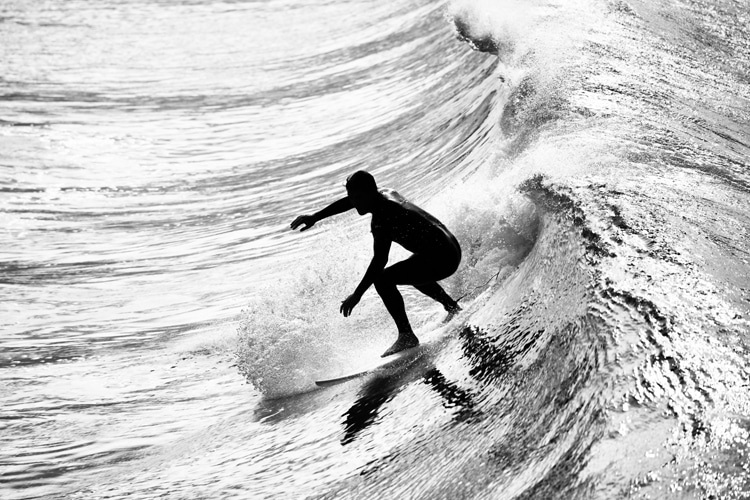Visualization is a mental imagery technique that improves technical and physical skills to attain desired goals.
When people sit down and go over their bodies and through the motions, they tend to learn quicker, be quicker, and perform better.
It might sound strange, but you can actually get your surfing to a whole new level by practicing the take-off-and-ride process in your brain.
Visualization is already a fundamental part of many professional athletes' training, especially those in high-performance sports.
It's just another layer of potential improvement one can add to their training routines, alongside healthy diets, highly specific workouts, and sleep routines.
Let's not forget that it is always the brain that controls the body.
A winning mindset is a compilation of several variables, including confidence, physical fitness, psychological well-being, and above-average technical abilities.
Professional surfers have been incorporating visualization in their daily training programs to boost their skills, connect maneuvers, and read waves better than their opponents.
And because you often only have 30 minutes to choose, catch, and ride the best possible waves, everything should be smooth and flow naturally.
How many surfers fail to connect simple maneuvers just because they are not focused or performing "without thinking"?
It happens all the time.
And we, the spectators, wonder: "How could he not complete that re-entry? The wave was so easy..."
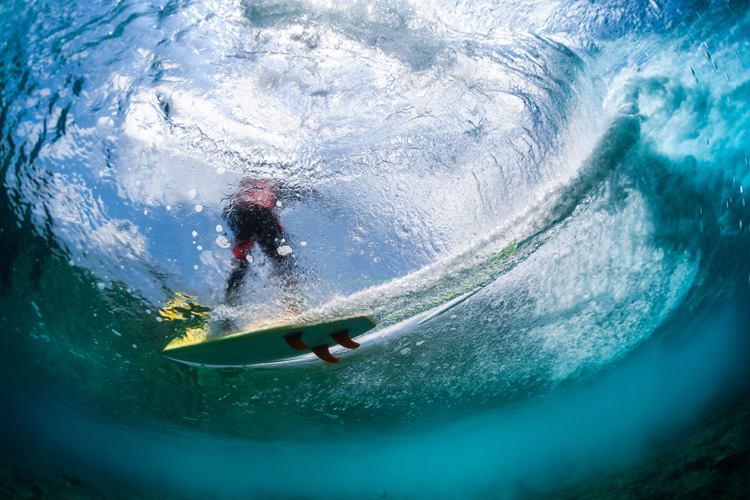
Automaticity
The technique that allows us to "rehearse, practice, and perform" a maneuver in our brain is what visualization does for sportspeople.
"The act of physical visualization and imagination of a motor skill is about 50 percent as effective as physically performing it," explains Matthew Paul Walker, scientist and professor of neuroscience and psychology at the University of California, Berkeley.
"It is 50 percent effective in changing the plastic connections within the brain. So even just visualization - passive play - still can actually cause a rewiring of the brain beneficially."
In surfing, as with many other sports, your techniques have to be automatic - you don't think about where to put your feet while taking off on a wave.
"Automaticity is one of the things that sleep actually accomplishes. We did additional studies to understand where in your skill performance sleep gives you the benefit," adds Walker.
"If you look at performance that is conscious and not automatic, it's usually very staccato. It's this, and then it's that, then it's that - it's not fluid."
"If you heard someone trying to play piano, to begin with, it doesn't sound very fluid. With someone who is a maestro, it just flows out of them."
"So we looked at this with motor skill performance again, sort of like keyboard playing musicianship, and you learn, you get better."
"Let's say that you type the sequence 4-1-3-2-4, and people learn it, but they have these problem points throughout the sequence."
"It's the same thing with any skilled performance in athletics. It's the brain chunking things up into small, sort of digestible bites. It's a good way to begin learning, but it's not a way to create automaticity."
"At some point, what you have to do is stitch all of those things together, and it just flows like a sentence, like a piano piece or a sequence of movements."
"What we found was that before sleep, you've got these big problem points, these gaps in your motor skill learning."
"Sleep does not necessarily improve the places where you're already good. Sleep is intelligent; it goes in and finds that problem point, that friction point in your motor skill deficit, and it smoothes it out, so you come back the next day, and now it's just 4-1-3-2-4."
"It's automaticity."
"You speak to musicians, and they'll say, 'I was playing, I just couldn't get that piece the night before, and then I came back the next day, sat down, and I could just play.'"
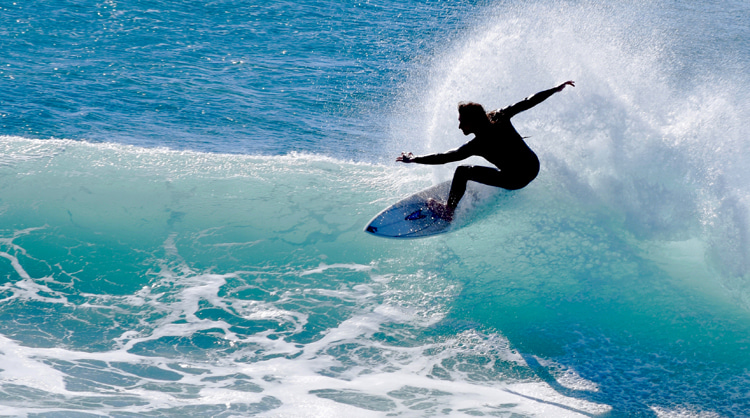
Visualization Applied to Surfing
Richard Bennett is a performance psychologist from Jan Juc, Australia.
For three years, he worked globally on the Association of Surfing Professionals (ASP) World Tour, consulting dozens of Championship Tour (CT) Qualifying Series (QS) and junior athletes.
Bennett is the author of "The Surfer's Mind," a book that helps wave riders tune their mind for optimal surfing performance.
After creating his private practice in 2000, the Australian commenced his journey to pioneer the field of surf psychology.
But how can visualization improve your surfing?
Thanks to this powerful mental tool that stimulates neuroplasticity, some areas can be dramatically enhanced.
According to the surf psychologist, here are some of the most relevant ones.
1. Prepare the Surf Routine
Imagine feeling strong and totally sure of yourself in the situation.
You can also mentally rehearse perfect surfing performance as well as achieve the success you desire.
In addition to setting your mind into full confidence mode, self-talk, and mental imagery can also be used with great effect whenever you sense your confidence levels begin to lower.
2. Decrease Arousal
Mental imagery of tranquil, soothing scenes and sensations, such as feeling heavy, warm, and calm in your body carts, melting away all tension, and achieving an inner stillness, is an effective way to decrease arousal levels during surf preparation and in the moment.
The imagery of perfect surfing performance in slow motion can also decrease over-arousal and center mind and body into your ideal performance state (IPS) for the upcoming surf.
3. Boost Creativity
Mental imagery is an excellent strategy to improve your imaginative thinking skills and creativity for surfing.
Mental imagery allows you to see things in new ways, recognize patterns, and make clear connections in the safety and limitless potential of your imagination.
With a fresh, open, and inquisitive beginner's mind, practice mental imagery to explore new maneuvers that you want to try.
Try to identify exactly within the four core elements - mind, body, equipment, and ocean - what you must be aware of to complete a trick or maneuver.
Immediately after, go surfing to practice and refine the new move you have been creating through mental imagery.
"To achieve creativity, I mostly use a lot of concentration and visualization. I visualize myself doing the things I want to do or achieve," states world champion surfer Lisa Andersen.

4. Fine-Tune Self-Talk
Practice visualizing positive images in your mind that center your focus and enable you to achieve your optimal arousal level for the surfing situation.
For example:
- Visualize a calm, tranquil, and joyful scene to decrease your arousal and center your focus on the positive;
- Visualize an energetic and exciting scene to increase your arousal and center your focus on the positive;
- Visualize the desired image or scene in preparation before you surf and whenever your natural self-talk becomes negative;
By taking control of your negative natural self-talk with conscious self-talk strategies, you can achieve optimal focus and arousal for peak performance in any situation or ocean conditions.
5. Practice Visual Search and Selection
Use mental imagery to simulate riding a particular wave or doing a specific maneuver.
Tune in to the precise visual cues and practice the best response.
A good tip is to slow down the experience in your mind and highlight all the cues you need to know and respond to.
You can then gradually speed up the situation in your mind until you can perfectly identify and respond to all the visual cues in real time.
6. Optimize Technical Adaptability
Once you have identified the correct technique for a particular maneuver or style of wave riding, it is time to program the correct surf motor schema.
Mental imagery allows you to practice perfect techniques over and over in your mind to quickly develop and reinforce the correct surf motor schema.
When practicing your mental imagery, simulate the real-life experiences of mind, body, equipment, and ocean as closely as possible.
In addition, pay close attention to how the correct movement feels and to the feedback you receive from each of the four core elements.
For best results, combine your mental imagery practice with the actual physical practice of the correct surfing skill, style, or technique.
Therefore, practice mental imagery in your mind first.
7. Improve Airs
Mental imagery is highly effective in stimulating and rehearsing aerial maneuvers as well as how to handle unexpected air.
Be clear and vivid with your body position and orientation cues throughout the aerial imagery.
In addition, tune in to the specific feel or kinaesthetic sensations (e.g., balance, poise, maneuvering, and center of gravity) you experience through flips, rotations, and other aerial maneuverings to gain the best results.
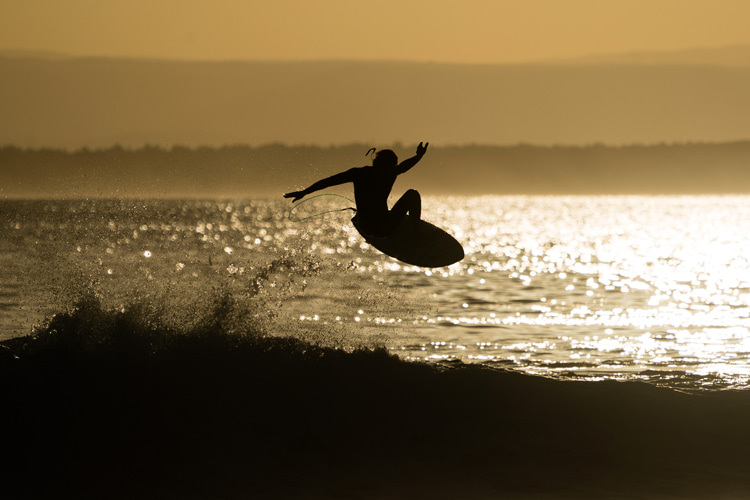
8. Prepare for Big Waves
Mental imagery is a highly effective strategy to safely prepare for extreme big wave situations.
"We just don't have any big waves at all in Queensland," recalls Wayne "Rabbit" Bartholomew.
"And so I had no choice but just to train and visualize, particularly visualizing Pipeline and just going over and over big wave situations, just like a repetitive going through rides on big waves."
"That was my preparation. It was completely mental because there was no North Shore training outside the North Shore."
But visualization is also good for becoming familiar with a new big wave break, for instance, when:
- Negotiating the lineup;
- Targeting the rideable, makeable waves;
- Maintaining optimal take-off positioning;
- Feeling how the wave breaks;
- Learning how to best ride the wave;
- Exploring how your equipment performs;
You can simulate and practice high-performance maneuvers, as well as deal with critical big wave situations like:
- Making late take-offs;
- Handling big wave chops at high speed;
- Landing safely when pitched or going over the falls;
- Staying calm during long, violent hold-downs;
- Swimming in or successful emergency rescues and responses;
In addition, mental imagery can be a valuable strategy to use in your surf preparation routine and in the moment when out riding big waves.
For example:
- Imagine you are the "ultimate, peaceful warrior" ready to charge a bigger wave than your last;
- Imagine you are your favorite big wave rider and adopt their same calm, confident, and committed mindset and big wave riding approach;
- Imagine calming music, scenes, or thoughts to harness and channel high adrenaline;
Big waves do not happen every day, so it is essential to keep yourself in tune with the regular practice of mental imagery.
Just a few minutes of quality imagery a day can give you valuable preparation experience, build self-confidence, and improve your ability to maintain focus and composure in critical big-wave situations.
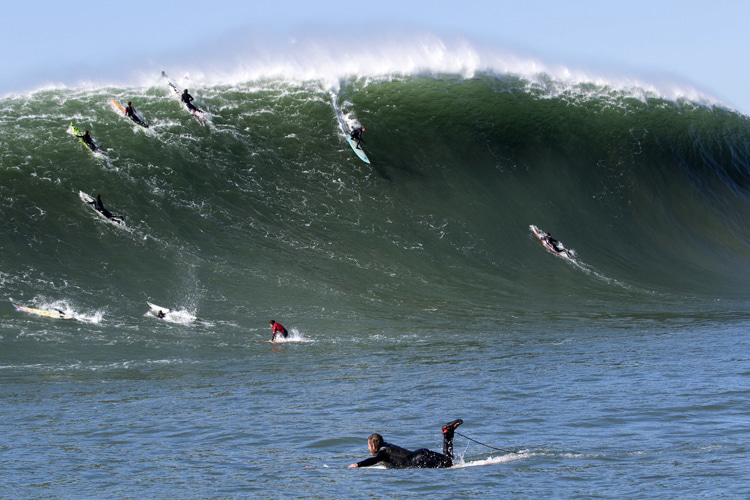
How to Practice Visualization in Surfing
Richard Bennett developed trademark visualization techniques specifically designed for surfers and surfing.
But how do you practice and exercise your brain?
Mental imagery involves creating or re-creating an image or experience in your mind.
Often called "visualization" or "mental practice," it is essentially what you do when you go mind-surfing.
Mental imagery is an effective technique for learning and refining surfing maneuvers and helping you to achieve your optimal arousal level and IPS.
Mental imagery works in the following way to learn and refine surfing maneuvers.
All your body movements for surfing, such as the level of muscle flexion required for a bottom turn, are stored in your brain as motor schemas.
Mental imagery allows you to change, modify, and refine your surf motor schemas for precise movement during the experience.
To achieve your desired arousal level and IPS in the moment, mental imagery works by causing corresponding mental, physical, and emotional changes to the specific image or sensation you create in your mind.
"Visualisation seems to help a lot, seeing yourself there already at the podium or doing the maneuver or riding the wave as perfectly as you want," underlines Andersen.
"It really helps in actually doing it because you put the picture in your mind first, then practice it in your mind, and then it happens for you."
Adding simple visualization and meditation exercises to your everyday morning routine only takes five minutes.
There are two basic types of mental imagery:
1. Internal Imagery
Where you see the image from your own eyes as if you are inside your body looking out.
This type of imagery is excellent for arousal modulation, relaxation, and increasing awareness for performance feedback.
2. External Imagery
Where you see the image from outside your body, like video footage shot from a boat or the beach.
This type of imagery is excellent for identifying optimal timing and positioning on a wave, identifying awkward techniques or style, and consolidating preparation by simulating an upcoming situation.
It is quite common to have a natural preference or greater ability for one type of mental imagery.
This is fine as both types of imagery can be used with good effect for all applications.

Applications of Mental Imagery
"Simulating wave situations and heat situations, I used to do that all the time; I used to do it over and over and over and over," explains Wayne "Rabbit" Bartholomew.
"I used to simulate wave situations in my training and visualize doing particular maneuvers and new maneuvers and technique and just the whole approach in hot dog surfing and tube riding and competitive surfing and big wave riding and everything."
"I also visualized a world tour, a world circuit, completely, everything about it, Grand Prix events all around the world in exactly the locations they became.
"I used to really visualize going around the world, and so when it happened, I was there, I was so there, so prepared."
Mental imagery is excellent for simulating and rehearsing specific maneuvers, wave-riding approaches, and preparing for upcoming competitive or other surfing challenges.
Mental imagery is also highly effective for:
- Building self-awareness and surfing awareness;
- Achieving healthy levels of confidence and self-belief;
- Achieving clear concentration and focus;
- Keeping fresh and motivated when you are landlocked by a long flat spell;
- Achieving your optimal emotional state, arousal level, and ideal performance;
- Managing performance anxiety and big wave fear state;
- Developing creativity, technical adaptability, visual search and selection skills, and air sense;
- Enhancing overall preparation as well as your specific mental preparation routines;
- Improving speed and accuracy of decision-making in the moment, relaxation, and stress management;
- Simulating specific biological healing processes for successful injury or illness recovery;
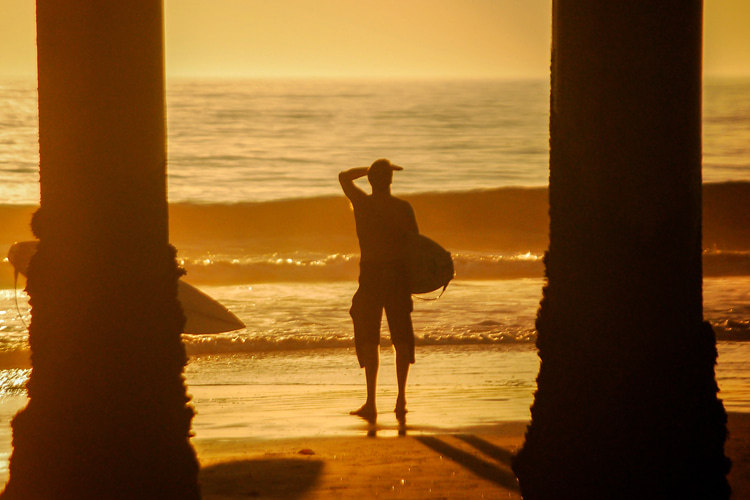
Guidelines to Practice Mental Imagery
Be Vivid
1. Go into much depth and detail with your imagery - use all five senses and really explore what you see, hear, smell, taste, and feel;
2. Be vivid with emotions - explore how emotions feel physically (e.g., altered heart rate, hair standing on end, warmth in the face) and explore what thoughts accompany each emotion (e.g., positive or negative);
3. Depth and detail with kinaesthetic feelings such as balance, poise, center of gravity, muscle movements, and comfort level further enhance your imagery practice;
Allow Self-Perception
Self-perception allows you to adjust weaknesses and reinforce the strengths in your surfing - be open to stand back and look at your surfing as well as explore your mind-body experiences through surfing;
Practice Mental Imagery
- Set yourself up in a quiet, comfortable area and begin to relax by taking deep, even breaths;
- Draw your focus to your mind's eye;
- Begin with external imagery that re-creates already experienced events to build your skills in vividness and self-perception;
- Start with a two-dimensional image, then progress to three-dimensional images and detailed scenes, then on to specific surfing scenarios as your imagery ability improves;
- Once skilled, internal imagery may be used to facilitate kinaesthetic detail and modify mood, emotion, and arousal level;
- Pre-surf imagery serves to mentally rehearse and prepare for specific moves or surfing situations;
- Post-surf imagery assists with performance evaluation, increasing awareness and learning potential from each surf;
Now, try it while riding a wave:
- Close your eyes and imagine a peeling wave from the external view;
- Clearly visualize the wave in vivid detail;
- See the wave;
- Hear the wave;
- Now imagine yourself riding the wave perfectly;
- Visualize yourself drawing the perfect lines, off the bottom, off the top;
- Now switch to an internal view - feel the wave, the energy, and the connection with your board;
- Visualize the oncoming sections and imagine yourself driving and maneuvering through them;
- Feel the physical sensations of movement, balance, and adrenaline;
- Feel your strength and confidence;
- Imagine yourself finishing the wave with style;
- Slowly open your eyes;
For best results, practice mental imagery in conjunction with the physical practice of the particular surfing move, skill, or situation.
Take your time, be creative, and have fun with it - even just a few minutes of quality imagery practice each day can be effective.
Before long, your mental imagery will come naturally and become a highly effective strategy for use in multiple areas of your surfing performance and broader life experiences.
A caution: negative outcome imagery can be detrimental to performance.
You will quickly know you are on the wrong track if you are falling off in your mind.
Therefore, maintaining a positive attitude, a clear focus on successful performance, and a firm belief in the effectiveness of mental imagery are essential.
Bibliography and References:
R. Bennett. "The Surfer's Mind," Richard Bennett, 2004
